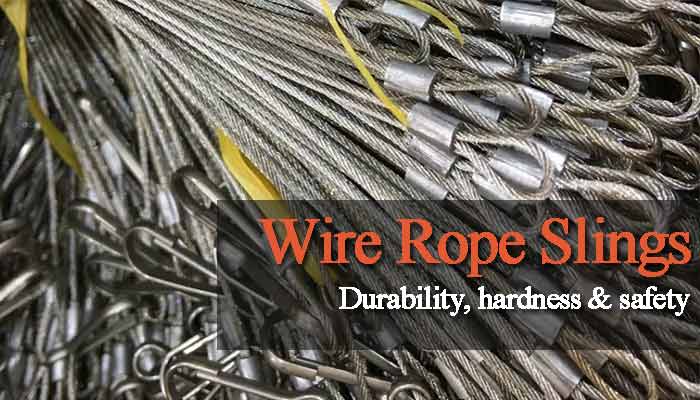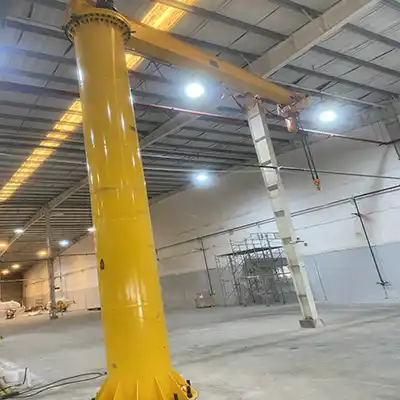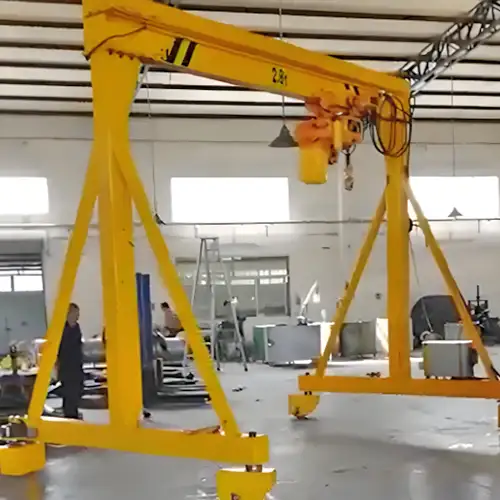
Wire Rope Sling & Wire Sling for Types of Overhead Cranes
Wire rope slings & wire sling basics for you to select right crane slings for your overhead crane & gantry cranes. Wire rope slings & wire slings with durability, hardness & safety, good price!
For a variety of reasons, wire rope is the favored lifting device. Multiple steel wires form individual strands that are laid in a helical pattern around a fiber or steel core in this one-of-a-kind design. This structure is strong, flexible, and capable of withstanding bending loads.Wire rope slings are widely used in the construction, automotive, oil & gas, and general manufacturing industries, where big weights and harsh environments are common. They're also common in steel mills and forging operations, where the rope's durability is put to the test.
For the exact lifting application, different combinations of the material, wire, and strand structure will provide varied benefits, such as abrasion resistance, strength, flexibility, and fatigue resistance. Wire rope slings are less expensive to purchase than alloy chain, and they are also more lightweight.
Wire rope slings come in single-leg and multi-leg configurations and can be used in a number of hitches, including as vertical, choker, and basket hitches. Wire rope slings have a 5:1 Design Factor, which means the sling's breaking strength is five times more than the specified Working Load Limit (W.L.L). A design factor is required, according to the Wire Rope Users Manual, to account for situations such as wear, abrasion, damage, and load fluctuations that are not easily obvious. Despite the design aspect of wire rope slings, the user should never exceed the rated Working Load Limit.

Advantages of Using Wire Rope Slings
Compared to alloy chain slings, they have a lower initial cost and are lighter in weight.In a reduced diameter design, high strength and flexibility are combined.
Different designs and constructions of wire rope provide:
- Strength
- Flexibility
- Abrasion resistance
- Fatigue resistance
- Corrosion resistance
Braided or multi-part slings:
- More kink-resistant than single-part slings
- Have a lot of flexibility and cinch up around the weight in choker hitches.
- After a lift, they quickly return to their former shape. They can be utilized in vertical, choker, and basket hitches.
If a sling bridle's wire rope is damaged, the hardware (master links and hooks) can be reused—as long as the hardware is not damaged.
Disadvantages of Using Wire Rope Slings
- Low weight-to-strength ratio
- Inspection might be difficult due to construction, especially in and around the core. Misuse or abuse can result in kinking, crushing, or abrasion, causing structural damage and a loss of strength.
- It is not repairable; if it is taken from service, best practices for destroying and disposing of the sling should be followed. It is subject to internal and exterior corrosion.
- There are trade-offs between design and construction: a more abrasion-resistant rope will have less fatigue resistance, and vice versa.
- Steel core slings should never be utilized in temperatures exceeding 400 degrees Fahrenheit or below -40 degrees Fahrenheit.
Wire rope slings are made consisting of twisted and wrapped wires around a core. Wire rope slings are commonly used to hoist heavy weights. When there are five broken wires in one strand on lay, kinking, crushing, bird caging, heat damage, attachment breaking, deforming, or wearing, wire rope slings are not allowed to be used. Check more on wire rope sling inspections.
Use of wire rope slings in manufacturing
Wire rope slings are an essential piece of rigging hardware for lifting and hoisting activities, and they're employed in a variety of industries. Slings connect the load to the lifting device and come in a variety of configurations to accommodate a variety of uses. Single and multi-part slings (such as round braids, flat braids, Tri-Flex, and cable lay slings), grommets, single leg slings, multiple leg bridles, and a variety of fittings and attachments are included in these designs.
Wire rope slings are commonly used for large load lifting operations, which are common on construction sites, shipyards, and the marine sector, among other places. It's a crucial rigging component in the industrial business, as it necessitates a lot of heavy-duty shifting and loading of large goods.Depending on the manufacturing activity, these loads might take on a variety of shapes and sizes. Manufacturing is closely associated with engineering and industrial design, but it also encompasses a wide range of operations such as product production, packaging, and sales, among others. The type of wire rope sling you use depends on which of these activities the sling will be used for.

The Design of Wire Rope Slings
The pattern of the wire rope, as well as how many wires make up a strand and how many strands are coiled around its core, are used to designate the wire rope sling categories: A 619 wire rope has 6 strands of 19 wires, whereas a 637 wire rope has 6 strands of 37 wires.
Slings are utilized in a variety of ways in the manufacturing business. These are a few of the slings available:
Eye & Eye Slings
The oval "eye" at each end gives the sling its name, and it's commonly used in choker, basket, and vertical hitches. A Flemish eye splice is used to construct the eyes, which are then secured with a carbon steel sleeve. These rope slings are tough and dependable, and because of their adaptability, they're a popular choice.
Bridle slings
Bridle slings are divided into three categories: two-legged, three-legged, and four-legged bridle slings. These are supposed to be immediately attached to the load by connecting into lifting eyes or placing these loops over projections for general lifting. Because of their design, they're ideal for lifting loads with fixed lifting points.
Nine-part slings
Because the weight is spread uniformly throughout all nine pieces of the sling's body, nine-part slings are extremely effective with big and large loads. A nine-part sling's design enables for quick wire rope inspection, which is important for reusing the sling for several loads.
These are utilized in the manufacturing industry for heavy-duty loading.
Multi-part wire rope sling
Single loads of moderate weight work well using a multi-part wire rope sling. These slings are likewise formed of braided wire rope, which helps to evenly distribute weight over the sling's body. Multi-part slings are adaptable, sturdy, and long-lasting.
End note
Slings made of wire rope are an important part of rigging equipment and should be chosen carefully. The use of the wrong sling/s can result in an imbalanced load and the rigging structure collapsing.







